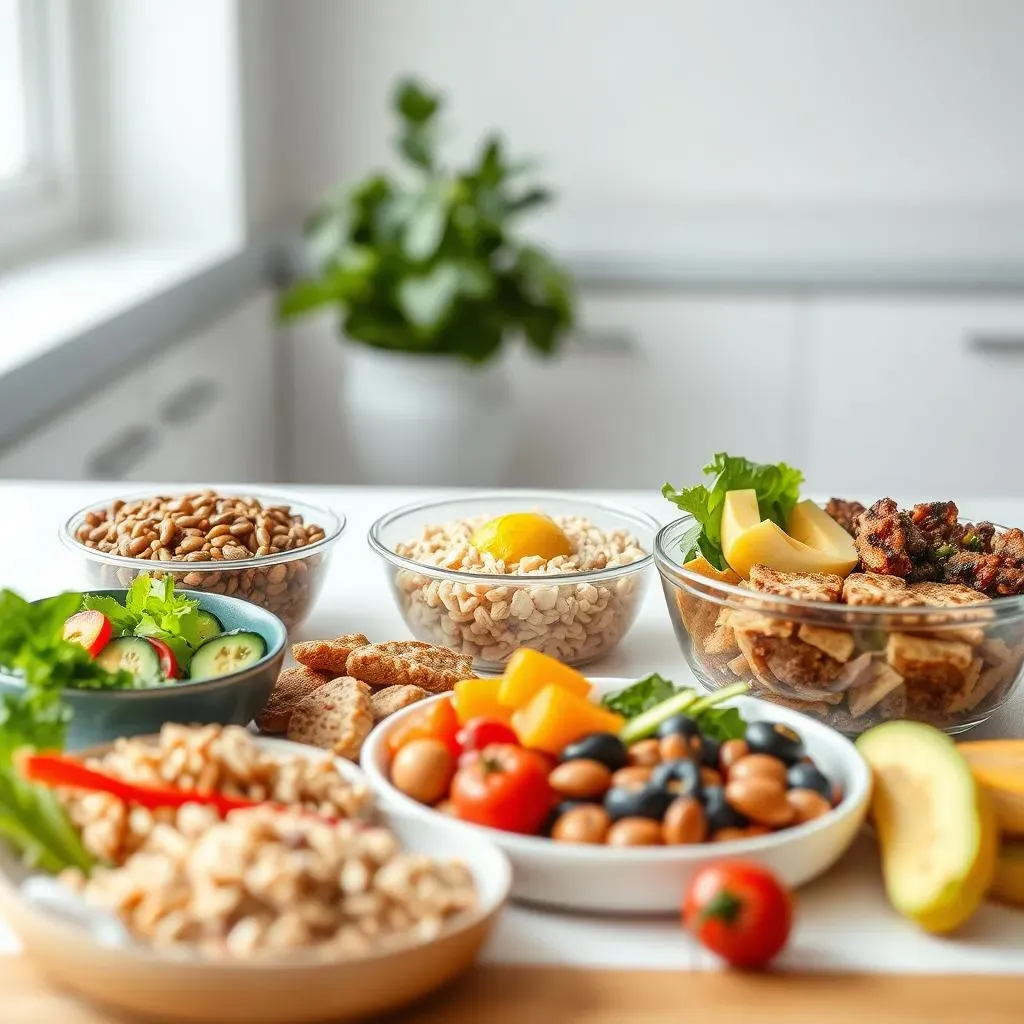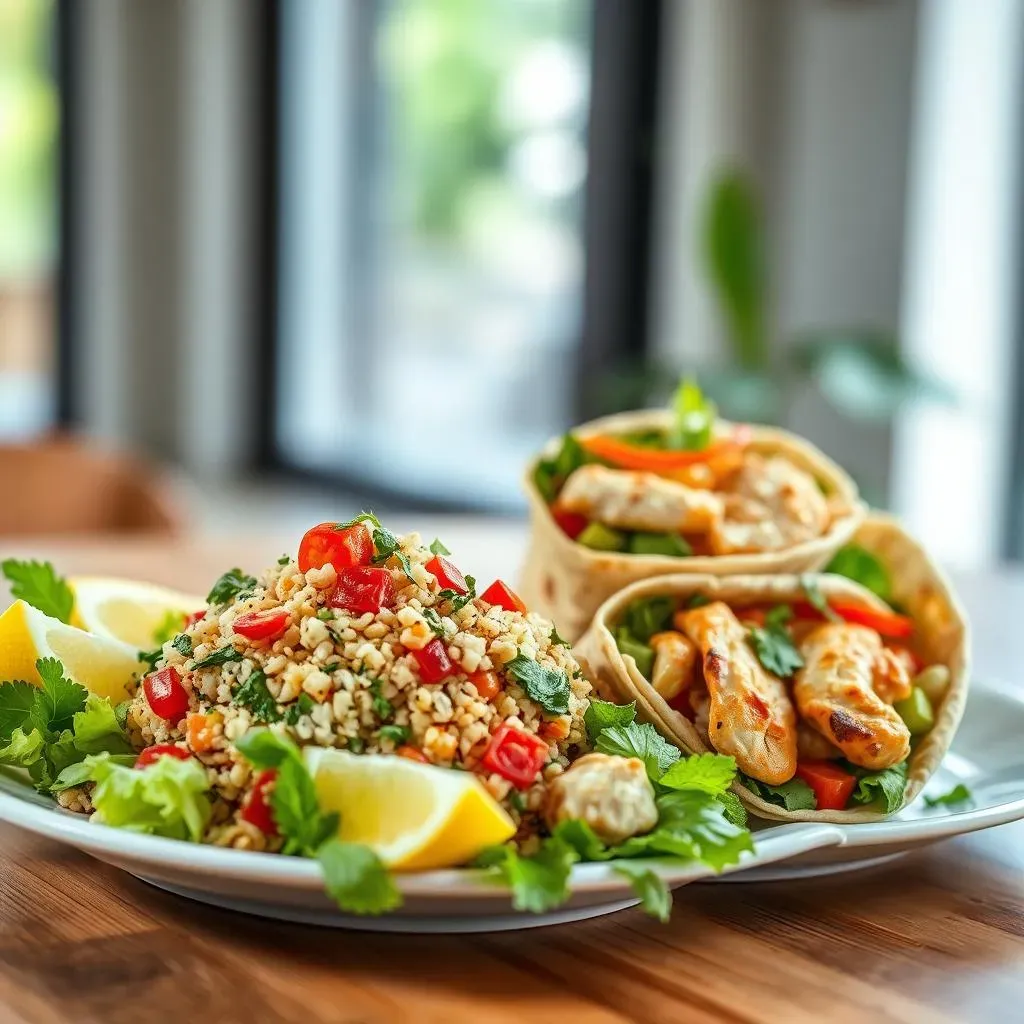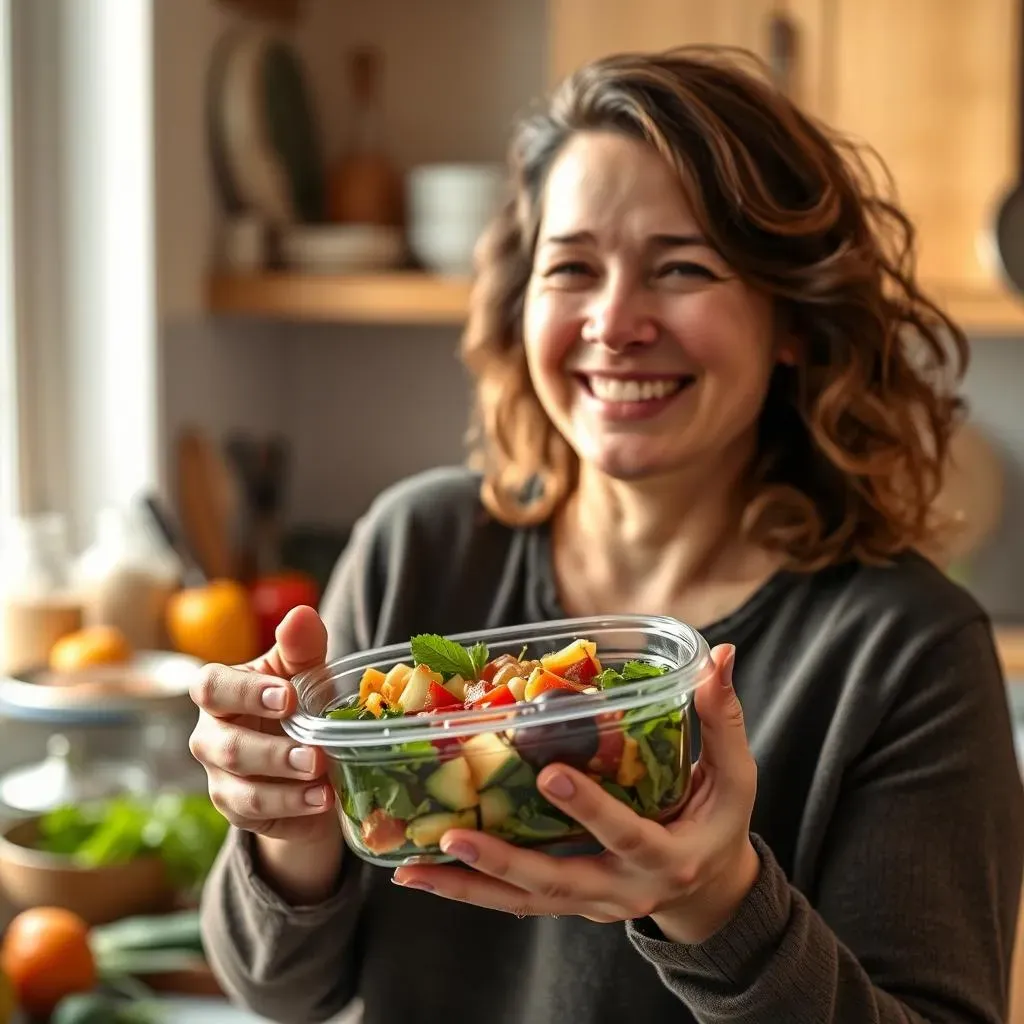Table of Contents
Managing diabetes can feel like a constant balancing act, especially when it comes to meal planning. Finding time to prepare healthy, delicious meals that also keep your blood sugar in check can be a real challenge. But what if I told you there's a simple solution? This article is your guide to mastering the art of "Lunch meal prep ideas for diabetics," helping you create a week's worth of diabetes-friendly lunches that are both satisfying and easy on your schedule. We'll explore the fundamental principles of diabetic-friendly eating, focusing on portion control and smart food choices. Then, we'll dive into a collection of delicious and versatile lunch recipes designed to suit various tastes and dietary needs. Finally, we'll share some expert tips and tricks to make your meal prep efficient and enjoyable, eliminating the stress and hassle often associated with managing your diabetes. Get ready to transform your lunch routine and take control of your health—one delicious, prepped meal at a time!
DiabetesFriendly Lunch Meal Prep Basics

DiabetesFriendly Lunch Meal Prep Basics
Understanding Carbohydrate Counting
Let's talk carbs! For diabetics, managing carbohydrate intake is key to controlling blood sugar levels. It's not about eliminating carbs entirely, but rather understanding how many grams your body can handle at each meal. This varies from person to person, depending on factors like medication, activity level, and overall health. A registered dietitian or your doctor can help you determine your personal carb target for lunch. Think of it like this: carbs are fuel for your body, but too much fuel can lead to a blood sugar surge.
Don't get overwhelmed by the numbers! Start by tracking your carbohydrate intake for a few days to get a sense of your current habits. Then, gradually adjust your portion sizes to meet your target. Many apps and resources are available to simplify carb counting, making it less daunting than it might seem. Remember, consistency is key – small, sustainable changes are more effective than drastic diets.
Food Group | Approximate Carbs (per serving) | Tips for Diabetics |
|---|---|---|
Whole-grain bread (1 slice) | 15-20g | Choose whole grains over refined grains. |
Brown rice (½ cup cooked) | 20-25g | Pair with lean protein and vegetables. |
Lentils (½ cup cooked) | 20g | High in fiber, keeping you full longer. |
Prioritizing Protein and Healthy Fats
Protein and healthy fats are your best friends when it comes to diabetes-friendly meal prep. Protein helps regulate blood sugar levels and keeps you feeling full and satisfied, preventing those mid-afternoon energy crashes. Good sources include lean meats (chicken breast, turkey), fish, beans, lentils, tofu, and eggs. Healthy fats, like those found in avocados, nuts, seeds, and olive oil, also help slow down the absorption of sugar into your bloodstream.
Think of protein and healthy fats as the anchors of your diabetes-friendly lunch. They provide sustained energy and help prevent blood sugar spikes. Combining them with complex carbohydrates (like whole grains) creates a more balanced and satisfying meal. Don't be afraid to experiment with different flavor combinations! You can create delicious and nutritious lunches that you'll actually look forward to eating.
- Lean chicken breast
- Salmon
- Greek yogurt
- Almonds
- Avocado
Delicious Lunch Meal Prep Ideas for Diabetics

Delicious Lunch Meal Prep Ideas for Diabetics
Mediterranean Quinoa Salad
This vibrant salad is packed with flavor and nutrients! It's a fantastic source of protein and fiber, keeping you full and satisfied until dinner. Quinoa is a complete protein, meaning it contains all nine essential amino acids. Combine cooked quinoa with chopped cucumber, tomatoes, red onion, Kalamata olives, and crumbled feta cheese. Drizzle with a lemon-herb vinaigrette (olive oil, lemon juice, oregano, salt, and pepper). You can also add grilled chicken or chickpeas for extra protein. The beauty of this salad is its versatility— feel free to swap out ingredients based on your preferences and what's in season.
Portion control is key here. Aim for about 1.5 cups of salad per serving. You can easily prepare a large batch on Sunday and enjoy it throughout the week. Store it in an airtight container in the refrigerator. This recipe is not only delicious but also extremely adaptable. Try adding different vegetables like bell peppers or zucchini, or experimenting with different cheeses. The possibilities are endless!
Ingredient | Approximate Carbs (per serving) |
|---|---|
Quinoa (½ cup cooked) | 15g |
Cucumber (½ cup chopped) | 2g |
Tomatoes (½ cup chopped) | 3g |
Feta cheese (1 oz) | 1g |
Chicken and Veggie Wraps
These wraps are quick, easy, and perfect for busy weekdays. Grilled chicken breast provides lean protein, while a variety of colorful vegetables add essential vitamins and fiber. Use whole-wheat tortillas for added fiber and complex carbohydrates. Fill your wraps with shredded chicken, bell peppers (any color!), shredded carrots, spinach, and a dollop of hummus or avocado. You can also add a sprinkle of your favorite spices for extra flavor. These wraps are highly customizable – feel free to experiment with different vegetables and sauces!
For a diabetic-friendly twist, focus on non-starchy vegetables and lean protein. Avoid creamy sauces or dressings high in saturated fat and added sugars. Aim for a balance of protein, healthy fats, and complex carbohydrates in each wrap. Prepping these wraps on Sunday is a breeze; simply chop all the vegetables and store them separately in airtight containers. Assemble the wraps each morning or pack them the night before for a grab-and-go lunch.
- Whole wheat tortillas
- Grilled chicken breast
- Bell peppers (red, yellow, orange)
- Shredded carrots
- Spinach
- Hummus or avocado
Tips and Tricks for Successful Diabetic Lunch Meal Prep

Tips and Tricks for Successful Diabetic Lunch Meal Prep
Mastering the Art of Meal Prepping
So, you're ready to conquer the world of diabetic-friendly lunch meal prepping? Fantastic! The key is to make it a regular part of your routine, just like brushing your teeth. Pick a day each week—Sunday works well for many—and dedicate some time to prepping your lunches. Don't try to do everything at once; start small. Choose 2-3 recipes to begin with, and gradually add more as you become more comfortable. Think of it as a marathon, not a sprint. Consistency is your superpower here!
One of the best ways to stay organized is to create a weekly meal plan. Write down what you'll be having for lunch each day, and make a corresponding shopping list. This will prevent those last-minute dashes to the grocery store and impulsive unhealthy food choices. Having everything prepped and ready to go makes healthy eating so much easier, especially during busy weeks. You'll thank yourself later when you don't have to stress about what to eat during your lunch break.
Day | Lunch | Prep Notes |
|---|---|---|
Monday | Mediterranean Quinoa Salad | Pre-chop veggies on Sunday |
Tuesday | Chicken and Veggie Wraps | Cook chicken and chop veggies ahead |
Wednesday | Leftovers from Dinner | Plan for larger dinner portions |
Smart Storage and Portion Control
Proper storage is crucial for keeping your prepped lunches fresh and safe. Use airtight containers to prevent spills and maintain food quality. Label each container with the date and contents for easy identification. If you're using leftovers, make sure they're properly cooled before storing them in the fridge. Remember, food safety is paramount! Also, getting your portion sizes right is super important. Use measuring cups and spoons initially to get a feel for the correct amounts of carbs, protein, and fats.
Once you've got a handle on portion sizes, you can start to eyeball it. But, don't be afraid to use measuring tools if you're ever unsure. Consistency is key to managing your blood sugar levels. And remember, it's okay to adjust your portion sizes based on your activity level and how you're feeling. Listen to your body! If you're still hungry after your lunch, add a small, healthy snack like a handful of nuts or some berries. But, it’s important to balance that with your overall daily carb intake.
- Use airtight containers
- Label containers with date and contents
- Properly cool leftovers before storing
- Measure portions initially, then eyeball as you get comfortable
- Adjust portions as needed based on activity and hunger